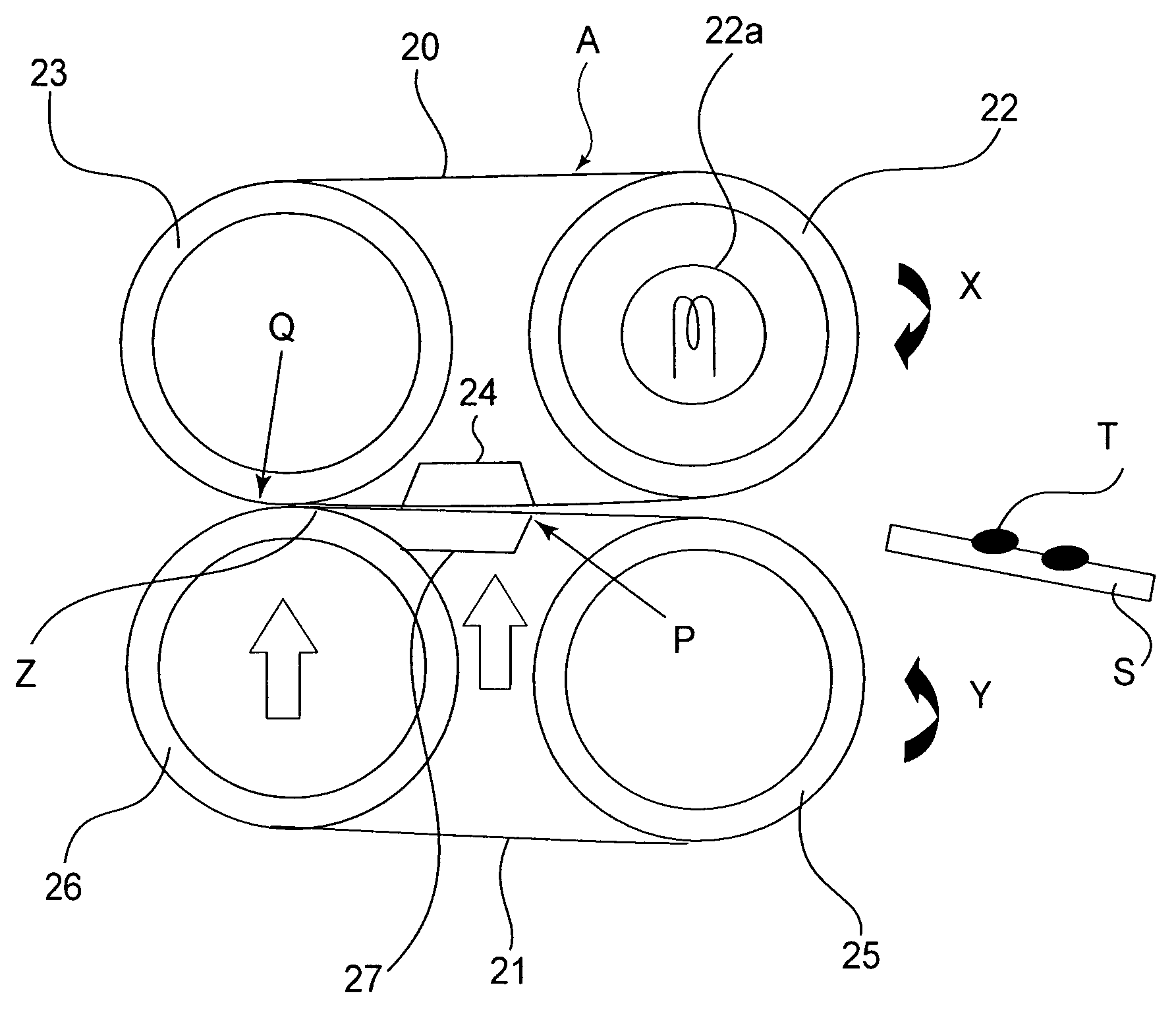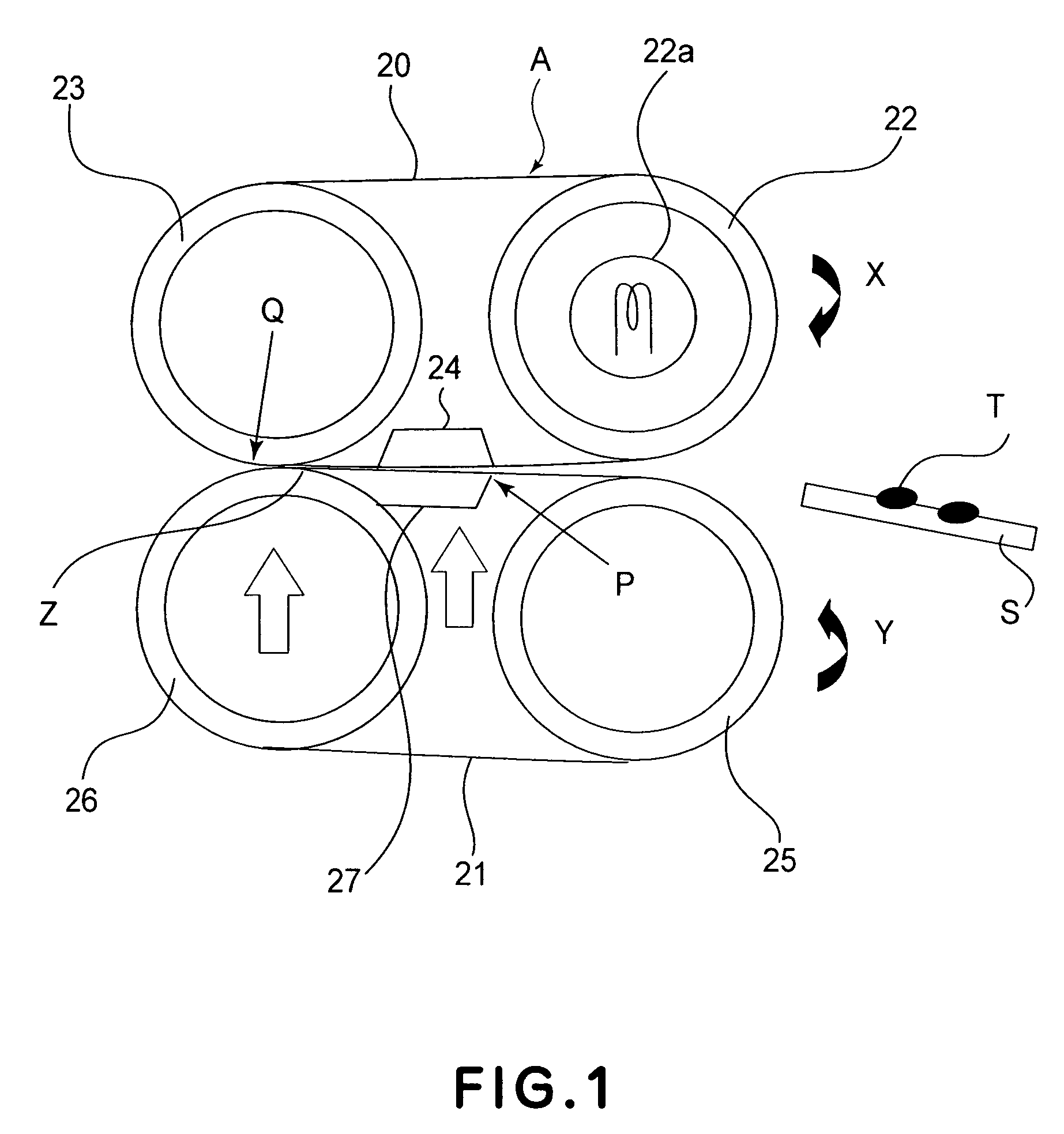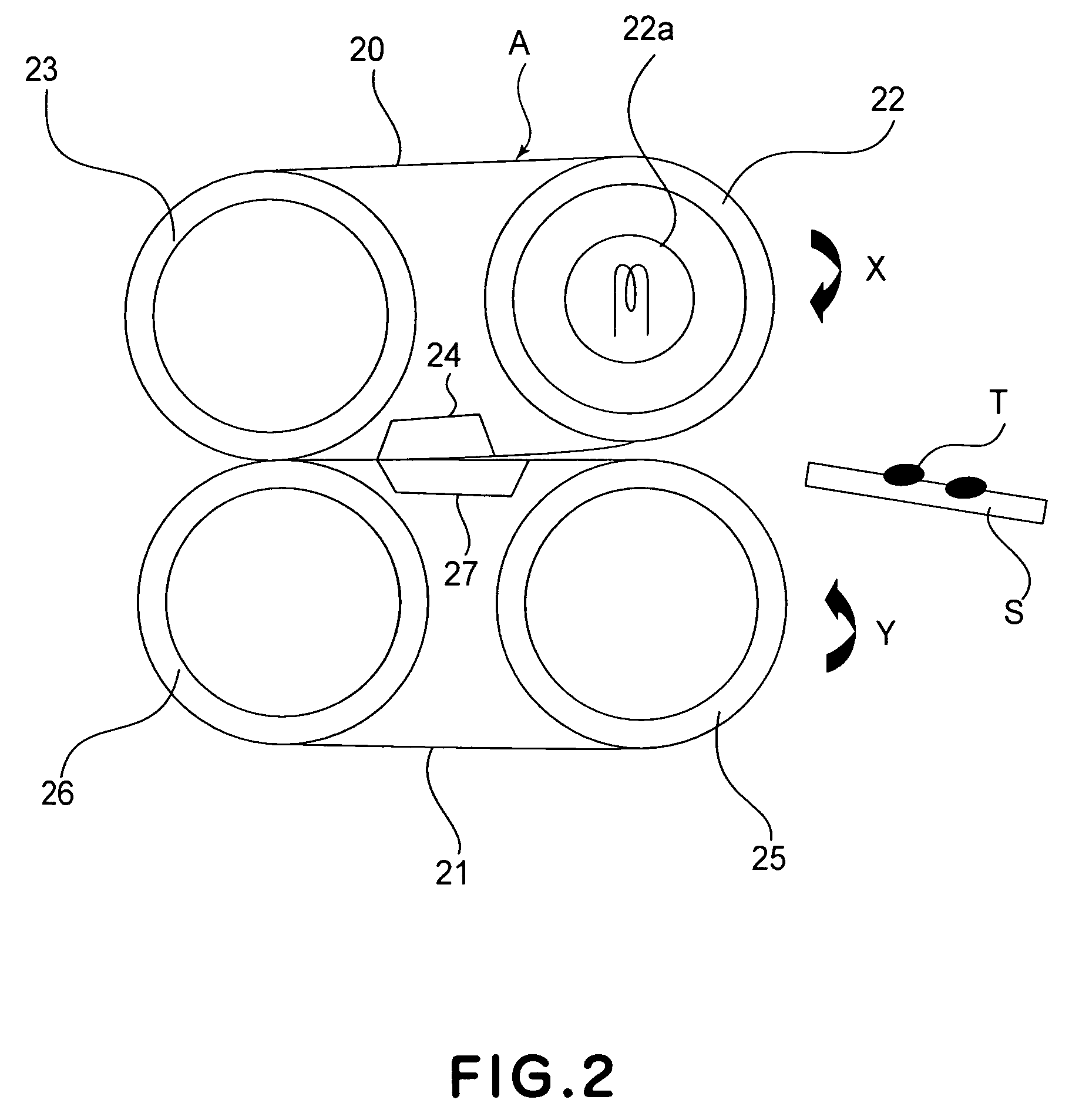Image heating apparatus
a heating apparatus and image technology, applied in the field of image heating apparatus, can solve the problem of not being able to confine the steam generated
- Summary
- Abstract
- Description
- Claims
- Application Information
AI Technical Summary
Benefits of technology
Problems solved by technology
Method used
Image
Examples
embodiment 1
[0018]First, referring to FIG. 6, the general structure of a typical image forming apparatus will be described.
[0019]The image forming apparatus shown in FIG. 6 is an image forming apparatus (so-called printer) which employs an electrophotographic image forming method.
[0020]The image forming apparatus 1 can be roughly divided into an image forming means for forming a toner image on a sheet of recording medium, and a fixing apparatus, as an image heating apparatus, for fixing the toner image formed on the sheet of recording medium, by applying heat and pressure to the toner image.
[0021]The image forming means is equipped with a photosensitive drum 2 as an image bearing member, a charging device 3 as a charging means, an exposing apparatus as an exposing means, a developing device 6 as a developing means, a recording medium feeder cassette 9; a feeding-and-conveying roller 10, a pair of registration rollers 11, a transfer roller 7 as a transferring means, and a cleaning apparatus 8 as...
embodiment 2
[0068]Next, the fixing apparatus and image forming apparatus in the second embodiment of the present invention will be described. The sectional views of these apparatuses are the same as those for the first embodiment. Therefore, the apparatuses will be described with reference to FIG. 1.
[0069]The fixation pad 24 in this embodiment is formed of a resin, more specifically, PPS (polyphenyl sulphide resin). However, the material for the fixation pad 24 does not need to be limited to resin, as long as the resultant fixation pad 24 is rigid and is not provided with the elastic rubber layer. For example, it may be formed of a metallic substance. Otherwise, the structure of the fixing apparatus in this embodiment is the same as that in the first embodiment.
[0070]In the case of a fixing apparatus, such as the one in the first embodiment, which employs a fixation pad formed of rubber, there is the fear that as the fixation nip is formed (as pressure is applied), the elastic deformation of th...
embodiment 3
[0075]FIG. 5 is a drawing which simply shows the fixing apparatus in another embodiment of the present invention. The fixing apparatus in this embodiment is reverse to the fixing apparatus in the first embodiment, in terms of the structures of the fixation side and pressure application side.
[0076]More specifically, in this embodiment, a rigid roller is employed as the fixation roller 23, which is disposed within the loop of the fixation belt 20, and an elastic pad is employed as the fixation pad 24. Further, the fixation pad 24 is disposed in contact with the fixation roller 23.
[0077]Moreover, an elastic roller is employed as the pressure application roller 26 (which is given the function of receiving inputted driving force and transmitting it to pressure application belt), which is disposed within the loop of the pressure application belt 21, and a rigid pad is employed as the pressure application pad 27, which in this embodiment is disposed close to the pressure application roller...
PUM
 Login to View More
Login to View More Abstract
Description
Claims
Application Information
 Login to View More
Login to View More - R&D
- Intellectual Property
- Life Sciences
- Materials
- Tech Scout
- Unparalleled Data Quality
- Higher Quality Content
- 60% Fewer Hallucinations
Browse by: Latest US Patents, China's latest patents, Technical Efficacy Thesaurus, Application Domain, Technology Topic, Popular Technical Reports.
© 2025 PatSnap. All rights reserved.Legal|Privacy policy|Modern Slavery Act Transparency Statement|Sitemap|About US| Contact US: help@patsnap.com



